Abstract
OBJECTIVE: The effectiveness of interventions which have been proposed or are currently in progress to reduce socioeconomic inequalities in health is largely unknown. This paper aims to develop guidelines for evaluating these interventions. APPROACH: Starting from a set of general guidelines which was recently proposed by a group of experts reporting to the national Programme Committee on Socioeconomic Inequalities in Health in The Netherlands, an analysis was made of the appropriateness of different study designs which could be used to assess the effectiveness of interventions to reduce inequalities in health. RESULTS: A "full" study design requires the measurement, in one or more experimental populations and one or more control populations, of changes over time in the magnitude of socioeconomic inequalities in health. This will usually imply a community intervention trial. Five alternative study designs are distinguished which require less complex measurements but also require more assumptions to be made. Several examples are given. CONCLUSIONS: Building up a systematic knowledge base on the effectiveness of interventions to reduce socioeconomic inequalities in health will be a major enterprise. Elements of a strategy to increase learning speed are discussed. Although the guidelines and design recommendations developed in this paper apply to the evaluation of specific interventions where rigorous evaluation methods can often be used, they may also be useful for the interpretation of the results of less rigorous evaluation studies, for example of broader policies to reduce socioeconomic inequalities in health.
Full text
PDF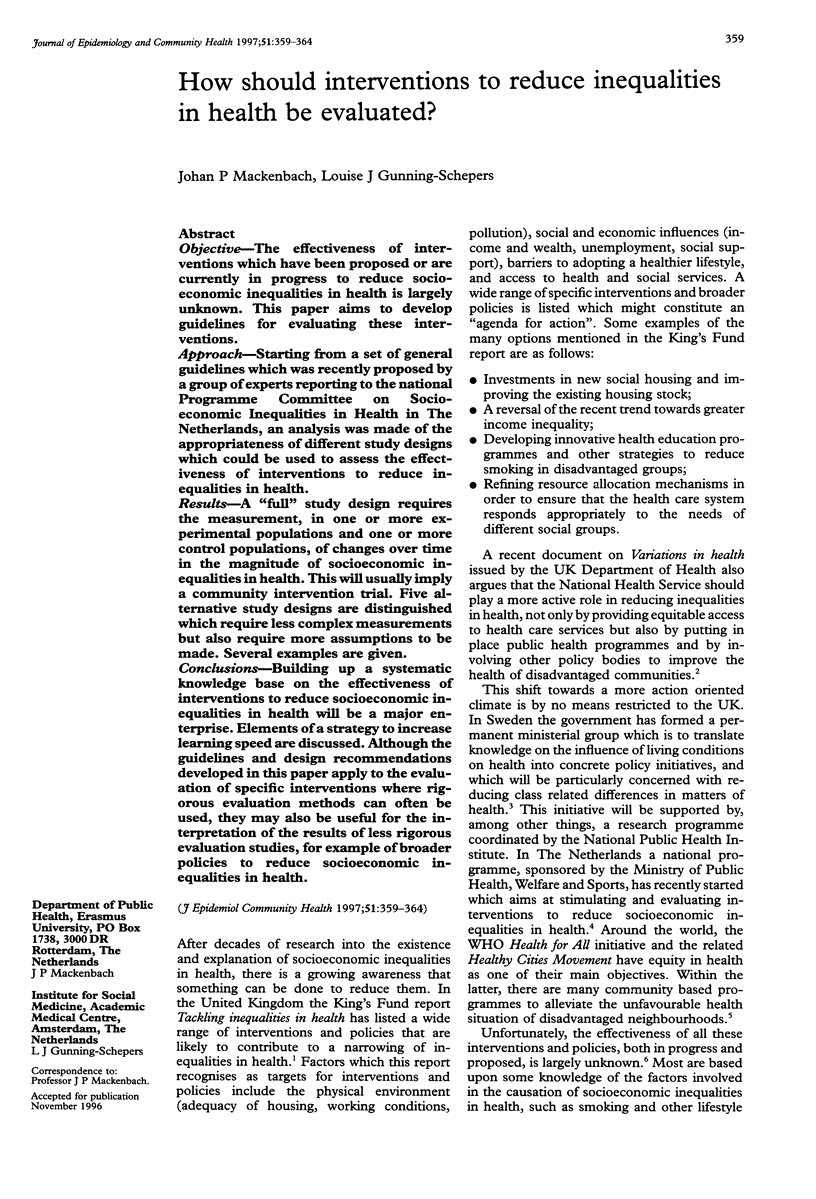
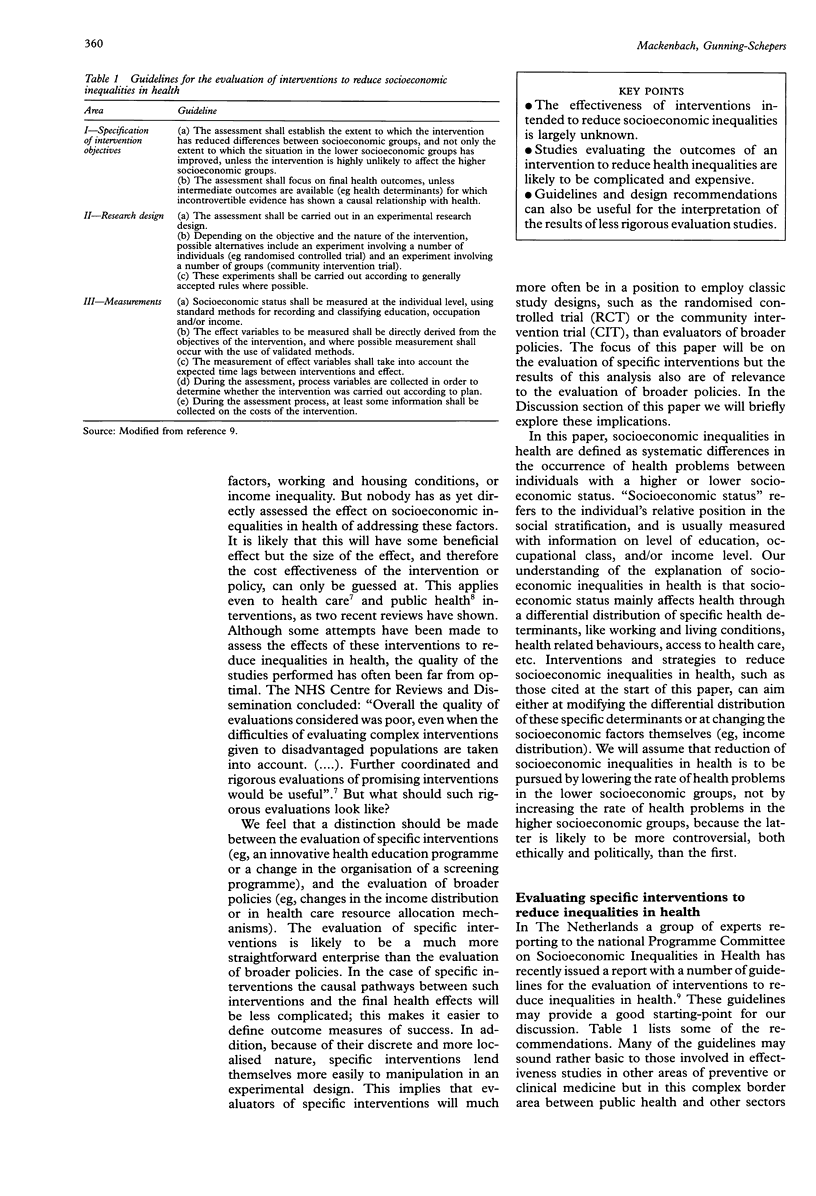
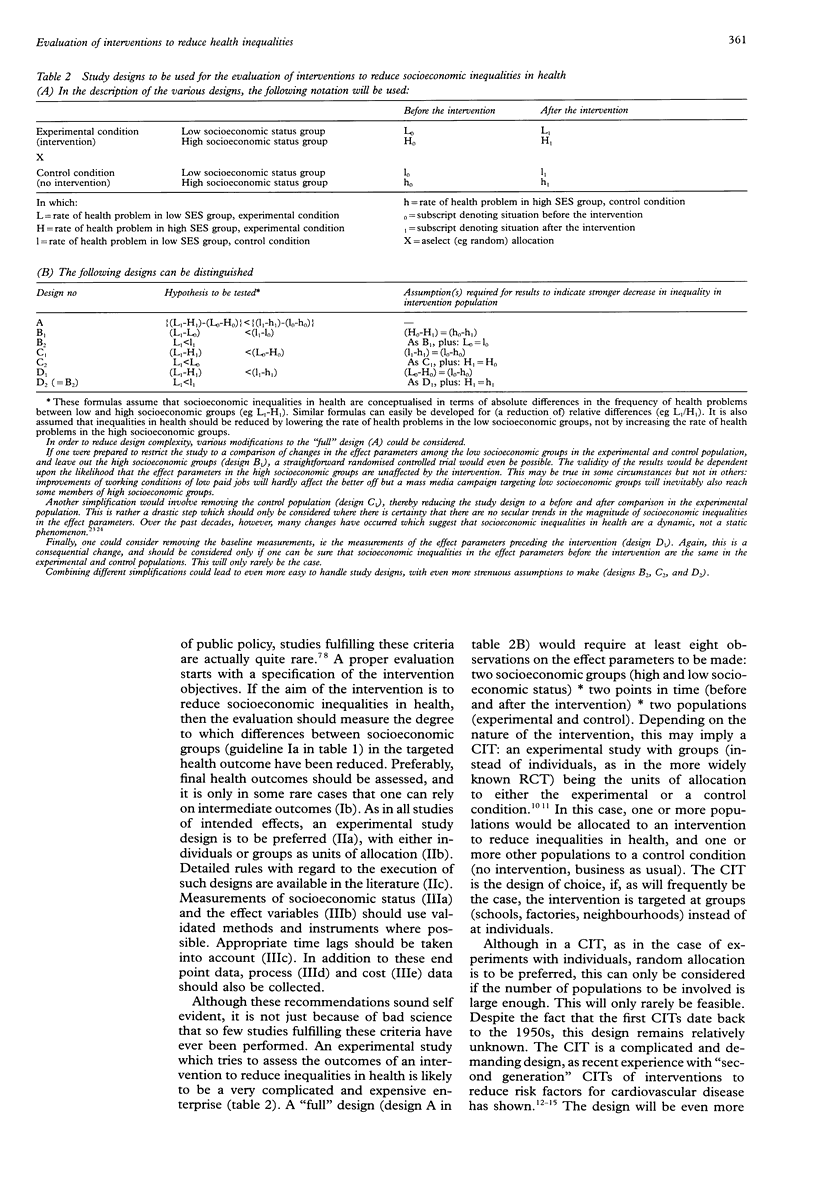
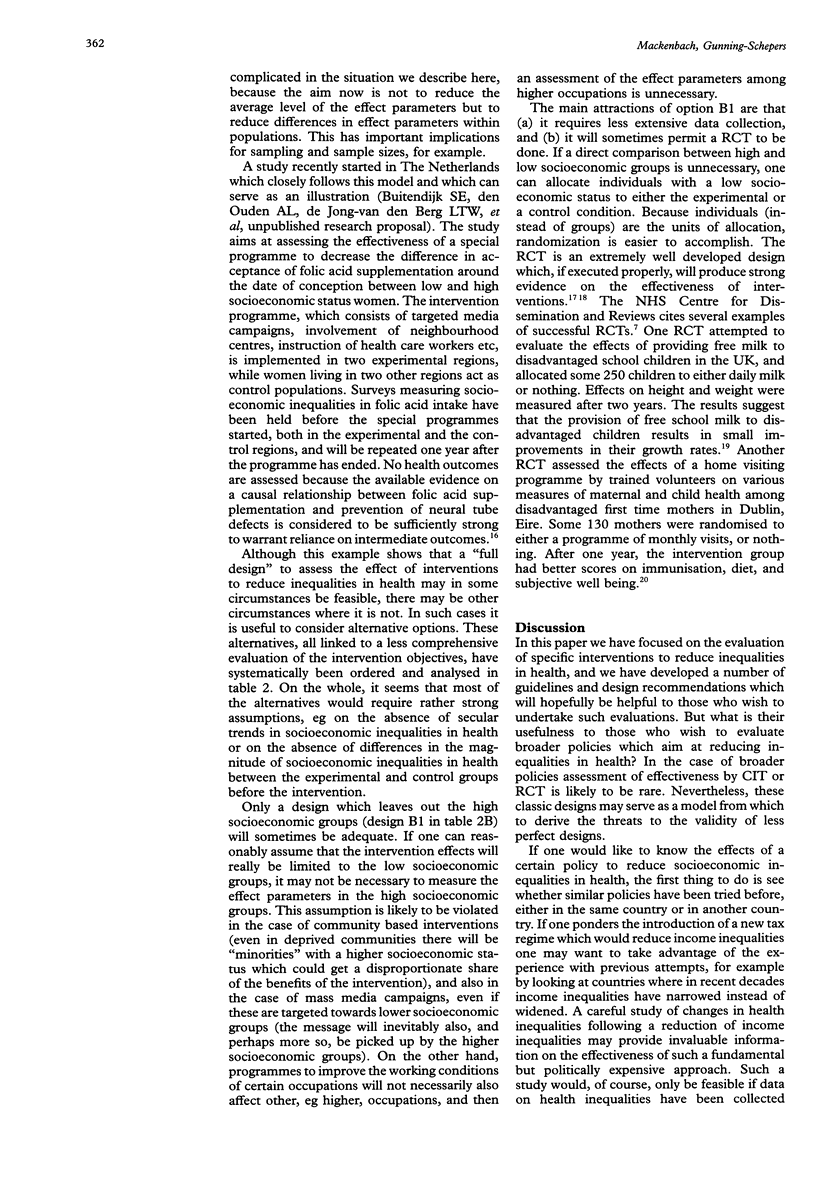
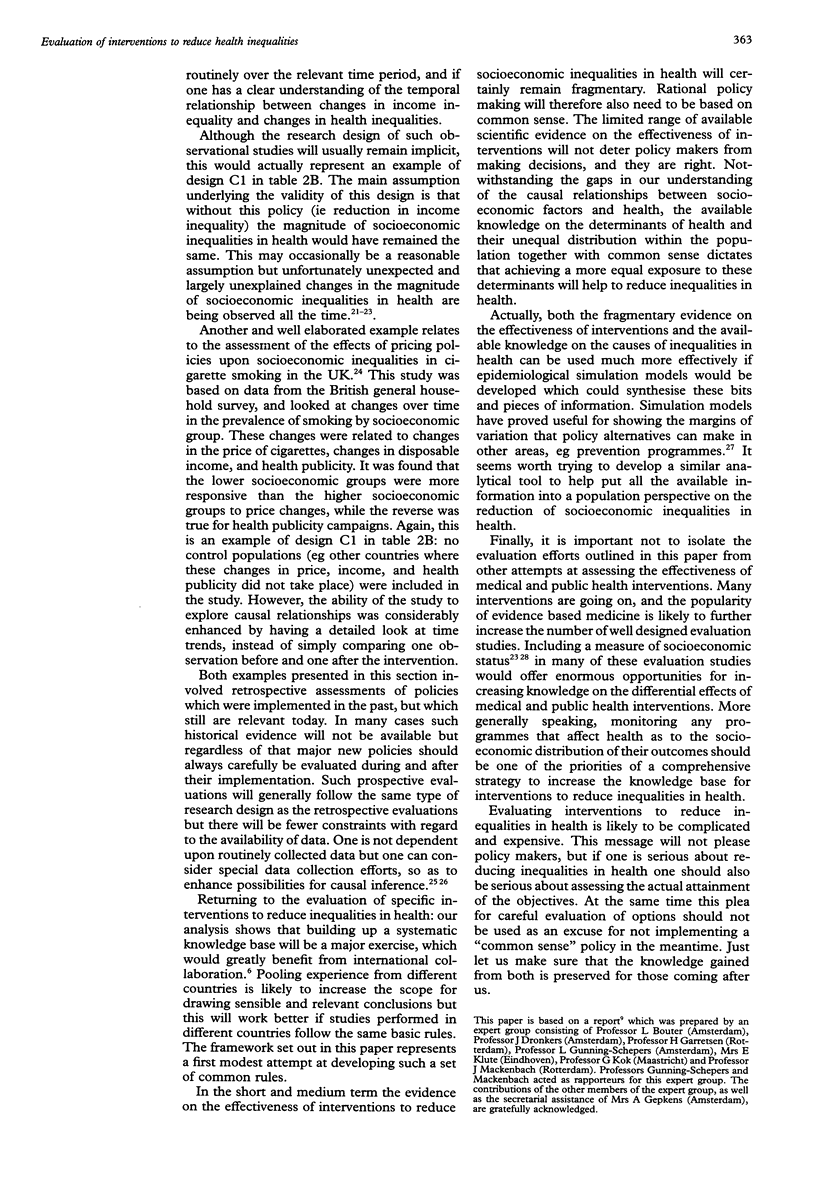
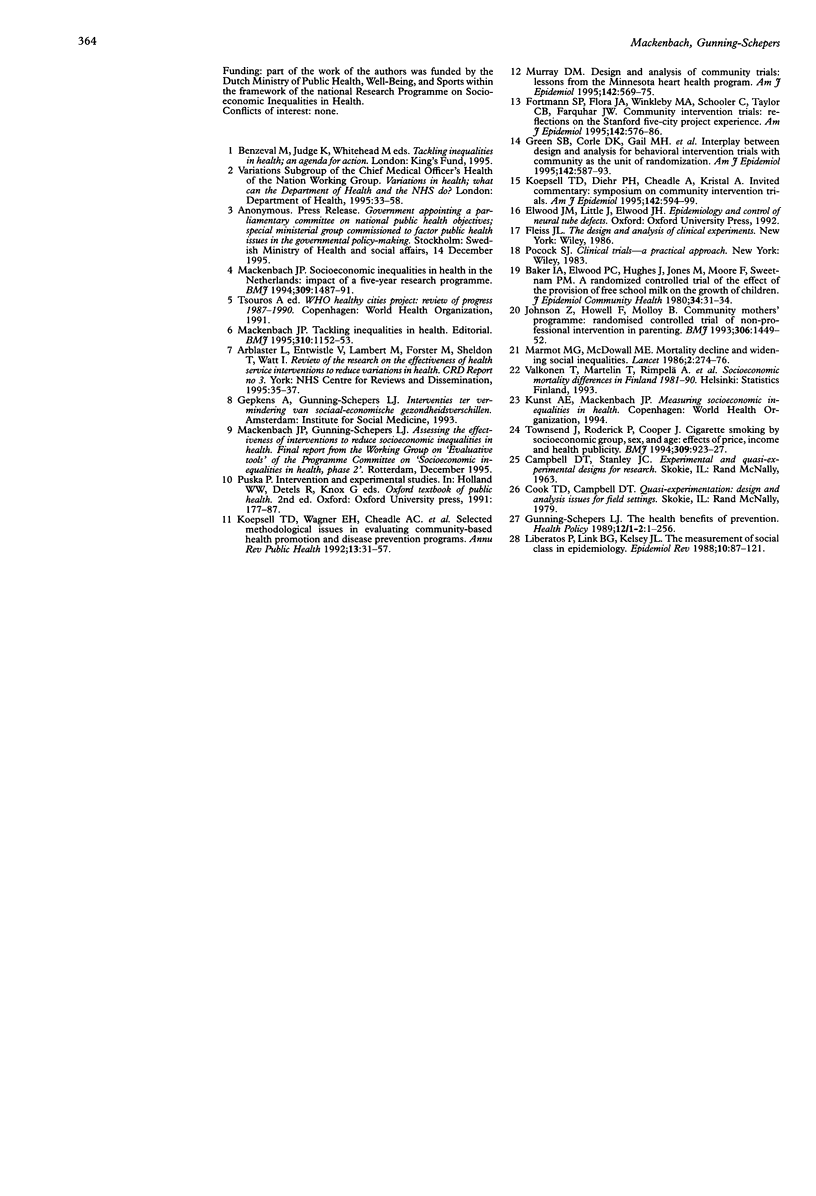
Selected References
These references are in PubMed. This may not be the complete list of references from this article.
- Baker I. A., Elwood P. C., Hughes J., Jones M., Moore F., Sweetnam P. M. A randomised controlled trial of the effect of the provision of free school milk on the growth of children. J Epidemiol Community Health. 1980 Mar;34(1):31–34. doi: 10.1136/jech.34.1.31. [DOI] [PMC free article] [PubMed] [Google Scholar]
- Fortmann S. P., Flora J. A., Winkleby M. A., Schooler C., Taylor C. B., Farquhar J. W. Community intervention trials: reflections on the Stanford Five-City Project Experience. Am J Epidemiol. 1995 Sep 15;142(6):576–586. doi: 10.1093/oxfordjournals.aje.a117678. [DOI] [PubMed] [Google Scholar]
- Gordon L. J. A separate federal Department of Health: environmental health and other prevention issues. J Public Health Policy. 1981 Sep;2(3):256–260. [PubMed] [Google Scholar]
- Green S. B., Corle D. K., Gail M. H., Mark S. D., Pee D., Freedman L. S., Graubard B. I., Lynn W. R. Interplay between design and analysis for behavioral intervention trials with community as the unit of randomization. Am J Epidemiol. 1995 Sep 15;142(6):587–593. doi: 10.1093/oxfordjournals.aje.a117679. [DOI] [PubMed] [Google Scholar]
- Johnson Z., Howell F., Molloy B. Community mothers' programme: randomised controlled trial of non-professional intervention in parenting. BMJ. 1993 May 29;306(6890):1449–1452. doi: 10.1136/bmj.306.6890.1449. [DOI] [PMC free article] [PubMed] [Google Scholar]
- Koepsell T. D., Diehr P. H., Cheadle A., Kristal A. Invited commentary: symposium on community intervention trials. Am J Epidemiol. 1995 Sep 15;142(6):594–599. doi: 10.1093/oxfordjournals.aje.a117680. [DOI] [PubMed] [Google Scholar]
- Koepsell T. D., Wagner E. H., Cheadle A. C., Patrick D. L., Martin D. C., Diehr P. H., Perrin E. B., Kristal A. R., Allan-Andrilla C. H., Dey L. J. Selected methodological issues in evaluating community-based health promotion and disease prevention programs. Annu Rev Public Health. 1992;13:31–57. doi: 10.1146/annurev.pu.13.050192.000335. [DOI] [PubMed] [Google Scholar]
- Liberatos P., Link B. G., Kelsey J. L. The measurement of social class in epidemiology. Epidemiol Rev. 1988;10:87–121. doi: 10.1093/oxfordjournals.epirev.a036030. [DOI] [PubMed] [Google Scholar]
- Mackenbach J. P. Socioeconomic inequalities in health in The Netherlands: impact of a five year research programme. BMJ. 1994 Dec 3;309(6967):1487–1491. doi: 10.1136/bmj.309.6967.1487. [DOI] [PMC free article] [PubMed] [Google Scholar]
- Mackenbach J. P. Tackling inequalities in health. BMJ. 1995 May 6;310(6988):1152–1153. doi: 10.1136/bmj.310.6988.1152. [DOI] [PMC free article] [PubMed] [Google Scholar]
- Marmot M. G., McDowall M. E. Mortality decline and widening social inequalities. Lancet. 1986 Aug 2;2(8501):274–276. doi: 10.1016/s0140-6736(86)92085-4. [DOI] [PubMed] [Google Scholar]
- Murray D. M. Design and analysis of community trials: lessons from the Minnesota Heart Health Program. Am J Epidemiol. 1995 Sep 15;142(6):569–575. doi: 10.1093/oxfordjournals.aje.a117677. [DOI] [PubMed] [Google Scholar]
- Townsend J., Roderick P., Cooper J. Cigarette smoking by socioeconomic group, sex, and age: effects of price, income, and health publicity. BMJ. 1994 Oct 8;309(6959):923–927. doi: 10.1136/bmj.309.6959.923. [DOI] [PMC free article] [PubMed] [Google Scholar]


